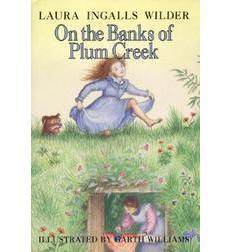 Mamacita says: My daughter was seven when she asked the question I’d been dreading for seven years: “Mommy, is there really a Santa Claus?”
Mamacita says: My daughter was seven when she asked the question I’d been dreading for seven years: “Mommy, is there really a Santa Claus?”
However, thanks to Caroline Quiner Ingalls, I knew exactly how to answer her. And, this answer fully satisfied my little child, and me.
Laura and Mary’s Ma knew how to explain to her children about Santa Claus without destroying their faith in miracles and magic, and oh, parents, it is so important that our children have faith in miracles and magic – not necessarily religious miracles or magic, but just, well, miracles and magic in general. Once we lose that, childhood is over.
Laura and Mary already knew that Santa Claus traveled with a pack mule on the prairie, since there was seldom enough snow for his sled, 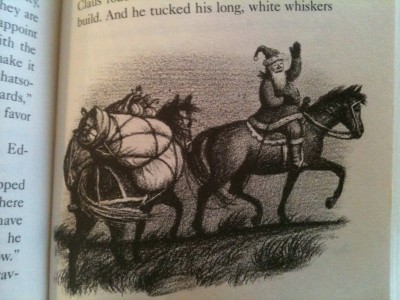 but they had been worrying because their little house on Plum Creek did not yet have a fireplace or chimney. :
but they had been worrying because their little house on Plum Creek did not yet have a fireplace or chimney. :
. . . then Laura had a chance to speak without interrupting. She said “There isn’t any fireplace.”
“Whatever are you talking about?” Ma asked her.
“Santa Claus,” Laura answered.
“Eat your supper, Laura, and let’s not cross bridges till we come to them,” said Ma.
Laura and Mary knew that Santa Claus could not come down a chimney when there was no chimney. One day Mary asked Ma how Santa Claus could come. Ma did not answer. Instead, she asked, “What do you girls want for Christmas?”
. . . “Ma!” (Laura) cried. “there IS a Santa Claus, isn’t there?”
“Of course there’s a Santa Claus, said Ma. She set the iron on the stove to heat again.
“The older you are, the more you know about Santa Claus,” she said. “You are so big now, you know he can’t be just one man, don’t you? You know he is everywhere on Christmas Eve. He is in the Big Woods, and in Indian Territory, and far away in York State, and here. He comes down all the chimneys at the same time. You know that, don’t you?”
“Yes, Ma,” said Mary and Laura.
“Well,” said Ma. “then you see – “
“I guess he is like angels,” Mary said, slowly. And Laura could see that, just as well as Mary could.
Then Ma told them something else about Santa Claus. He was everywhere, and besides that, he was all the time.
Whenever anyone was unselfish, that was Santa Claus.
Christmas Eve was the time when everybody was unselfish. On that one night, Santa Claus was everywhere, because everybody, all together, stopped being selfish and wanted other people to be happy. And in the morning you saw what that had done.
“If everybody wanted everybody else to be happy, all the time, then would it be Christmas all the time?” Laura asked, and Ma said, “Yes, Laura.”
–from On the Banks of Plum Creek, by Laura Ingalls Wilder
You’re welcome.
P.S. If your children don’t know all about the Little House books, you are not a good parent. I’m not kidding. Bring it on.

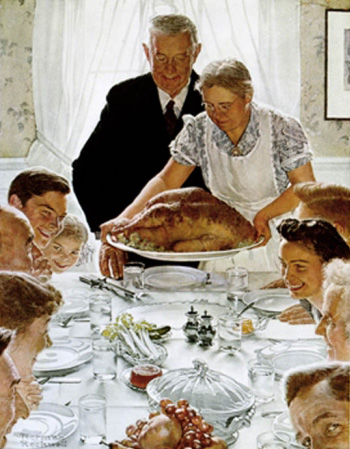 Mamacita says: This painting by Norman Rockwell, is quite possibly the most well-known image of Thanksgiving that most people know.
Mamacita says: This painting by Norman Rockwell, is quite possibly the most well-known image of Thanksgiving that most people know.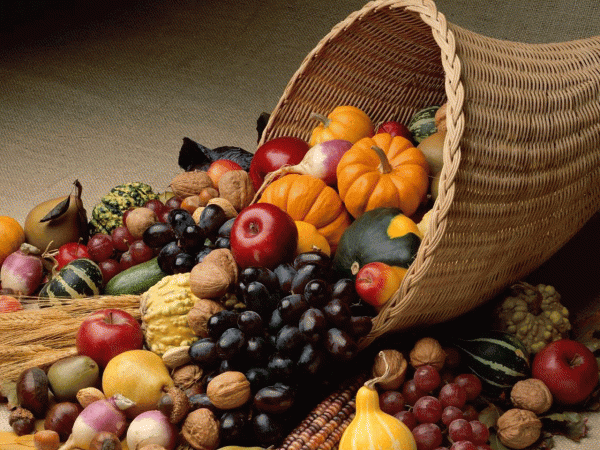 Mamacita says: The cornucopia, or horn of plenty, has such a wide, fascinating, and diverse history that you’ll just have to look it up for yourselves, because there’s not enough room here. I do love words, expressions, traditions, etc, that can be traced back to ancient mythology. That would be. . . let me see. . . almost everything.
Mamacita says: The cornucopia, or horn of plenty, has such a wide, fascinating, and diverse history that you’ll just have to look it up for yourselves, because there’s not enough room here. I do love words, expressions, traditions, etc, that can be traced back to ancient mythology. That would be. . . let me see. . . almost everything.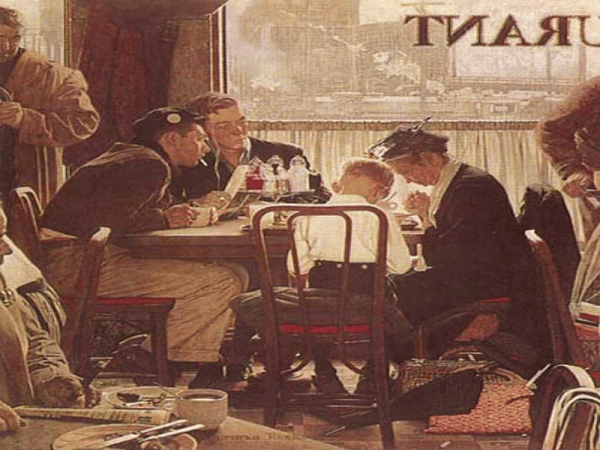 Mamacita says: When I first saw this picture, I was a small child and all I could think was, “Why were this mother and son seated at the same table with roughshod strangers?” Because this seems so odd to me. I’ve only known one restaurant in my life that seated people with strangers during rush hour so it could serve more customers, and even though the food there was wonderful, I was so uncomfortable being required to sit with strangers, I seldom went there unless there were no other options for my schedule that day.
Mamacita says: When I first saw this picture, I was a small child and all I could think was, “Why were this mother and son seated at the same table with roughshod strangers?” Because this seems so odd to me. I’ve only known one restaurant in my life that seated people with strangers during rush hour so it could serve more customers, and even though the food there was wonderful, I was so uncomfortable being required to sit with strangers, I seldom went there unless there were no other options for my schedule that day.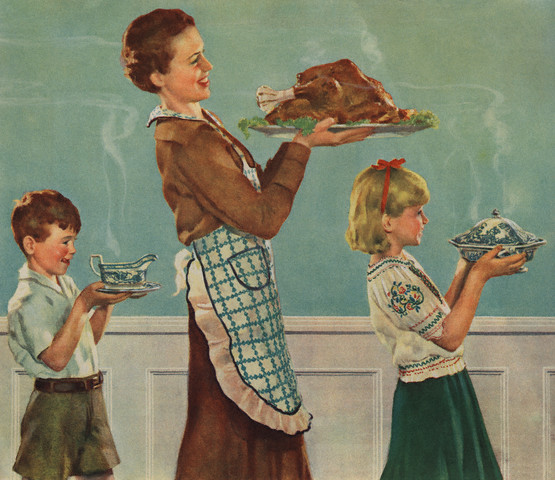 Mamacita says: Many people believe this is a Norman Rockwell painting, but it’s not. It was painted by artist Douglass Crockwell, and even though their surnames and style are similar, they are definitely two different people.
Mamacita says: Many people believe this is a Norman Rockwell painting, but it’s not. It was painted by artist Douglass Crockwell, and even though their surnames and style are similar, they are definitely two different people.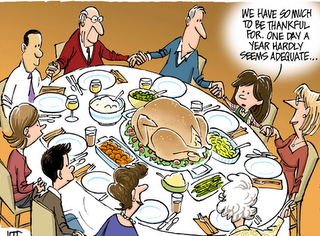 Mamacita says: Maybe we all need to focus on the good things in our lives more than we dwell on the bad things. A little gratitude can really pep up the ol’ attitude. Oh, and it’s okay to express thankfulness on the other 364 days, too.
Mamacita says: Maybe we all need to focus on the good things in our lives more than we dwell on the bad things. A little gratitude can really pep up the ol’ attitude. Oh, and it’s okay to express thankfulness on the other 364 days, too.